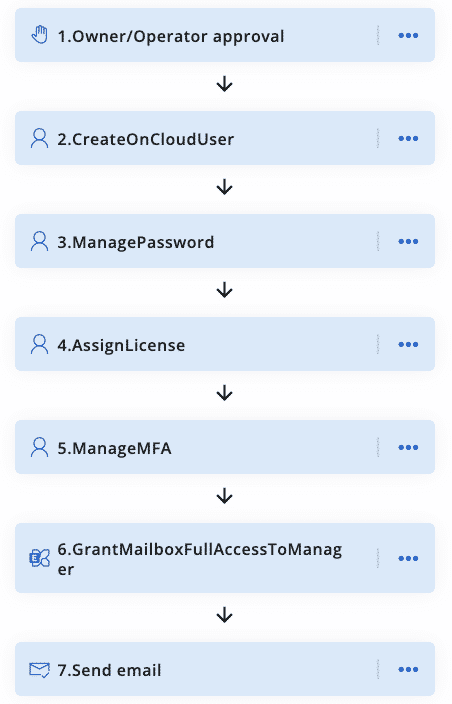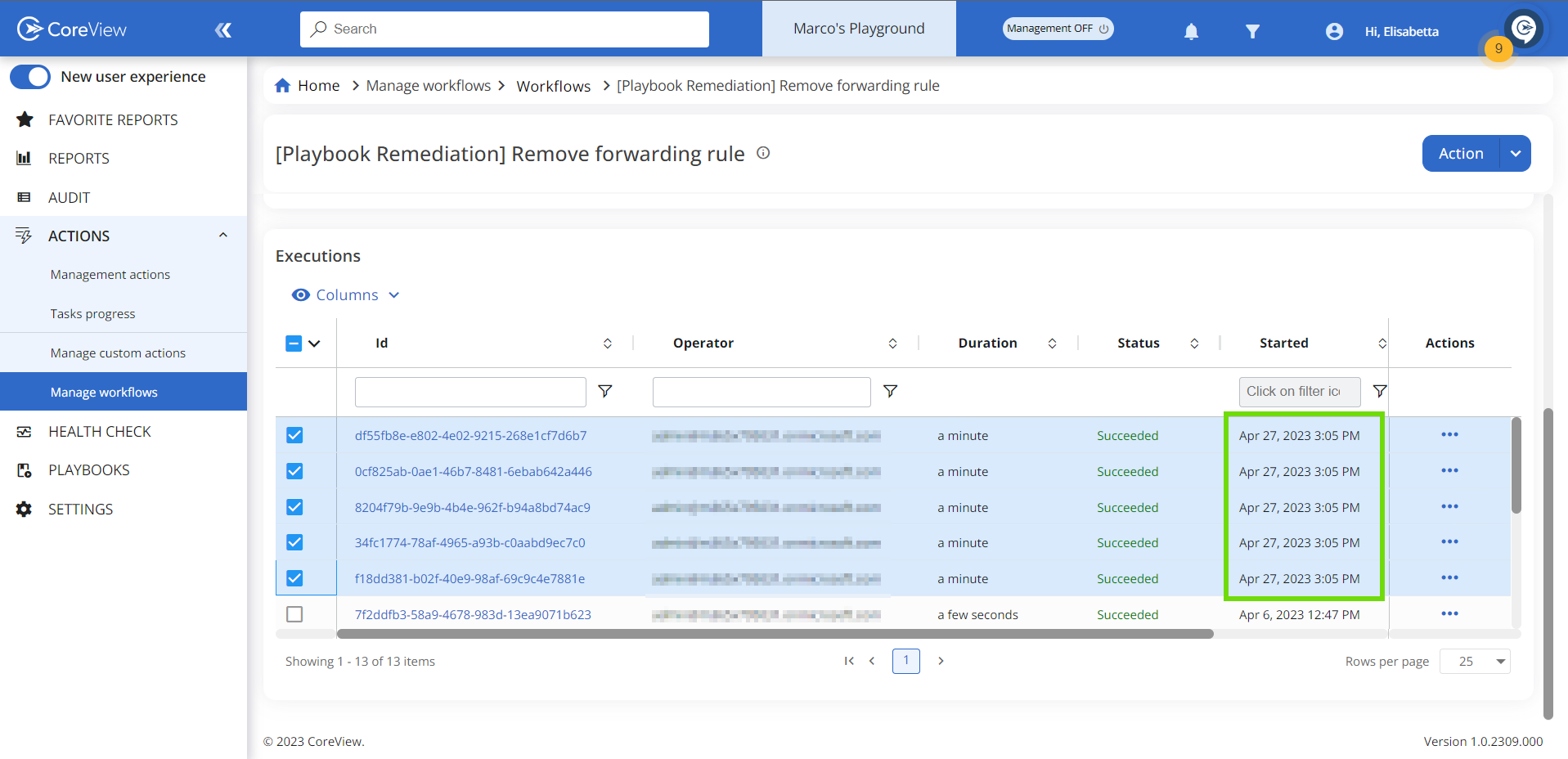Workflows are not available in the Essentials solution.
CoreView Workflows automates administrative tasks in Microsoft 365 environments by configuring chains of actions that perform repetitive management functions without manual intervention.

A common implementation is the user provisioning and deprovisioning process. The diagram above presents a Workflow for user onboarding. Typical steps in this Workflow are:
- Owner/Operator approval: ensures the subsequent steps are executed only if the operator receiving the notification approves it. If so configured, the Workflow owner can also approve the action.
- Create OnCloud User: creates a new user in the Cloud based on the variables entered in the input tab.
- Manage Password: sets a password for the User Principal Name and then requires the new user to change it at their first login.
- Assign License: enables you to choose the deployment that aligns with the user's role. For example, you may decide that the new user should receive the full E3 license capabilities, excluding Viva Engage.
- Manage MFA: allows you to enable or disable multi-factor authentication.
- Grant Mailbox Full Access to Manager: Grants the new user's manager access to the new user's mailbox.
- Send email: sends an email indicating that the Workflow process is complete.
Workflow elements
The main elements of a Workflow are:
- Execution inputs: initial data required for Workflow execution.
- Actions: all the tasks the Workflow is configured to execute.
Understanding Workflow execution
Each Workflow instance processes a single object per execution. When multiple items are supplied as variables (such as multiple user accounts), the Workflow executes once per item. For example, if two accounts are provided, there will be two executions, each targeting one account.

Types of Workflow execution
Workflow executions can be initiated in three ways:
- Manually, by the operator issuing a direct start command
- On a scheduled basis, at defined intervals or times
- Automatically, triggered by policy-based Playbooks configured for remediation actions.
